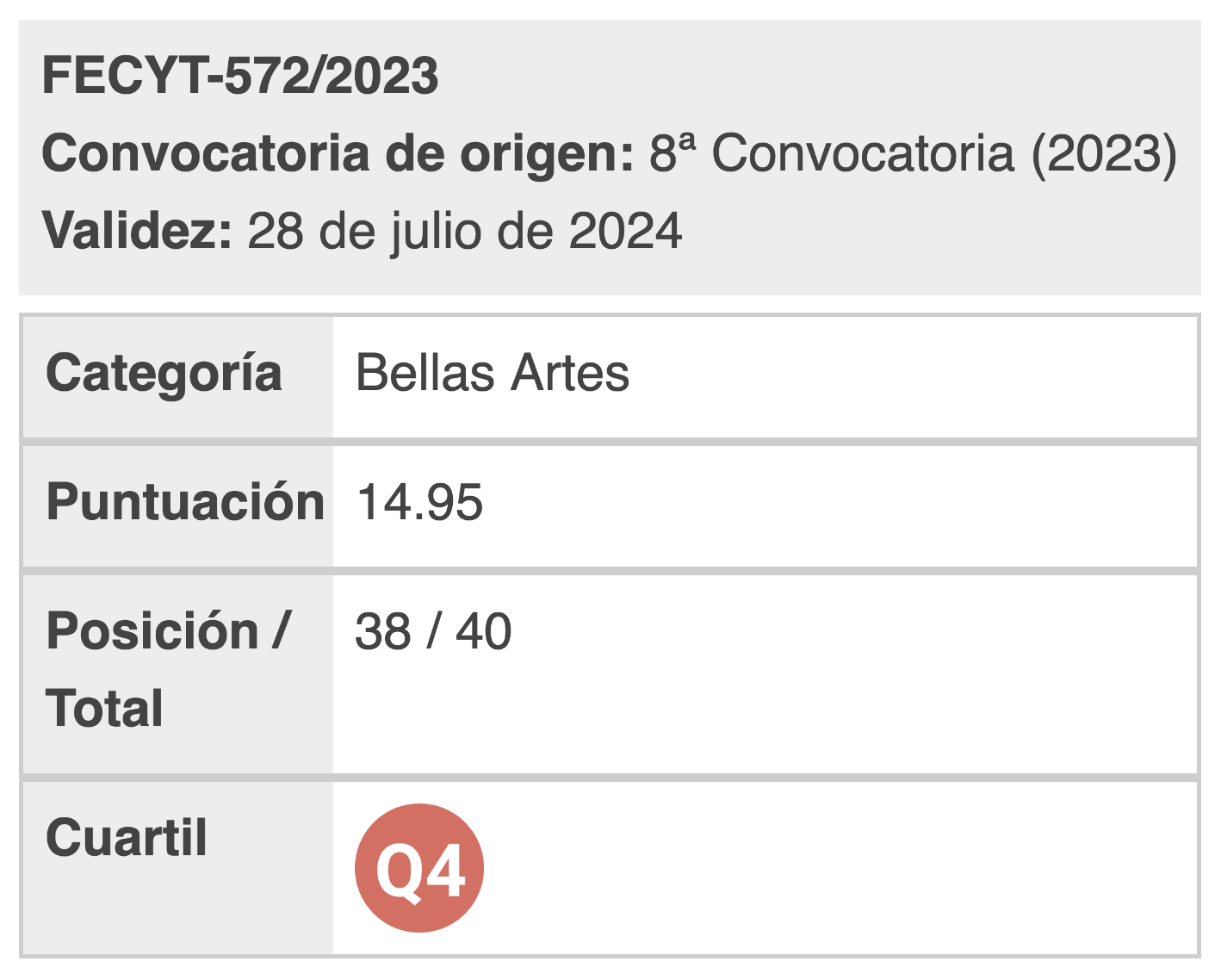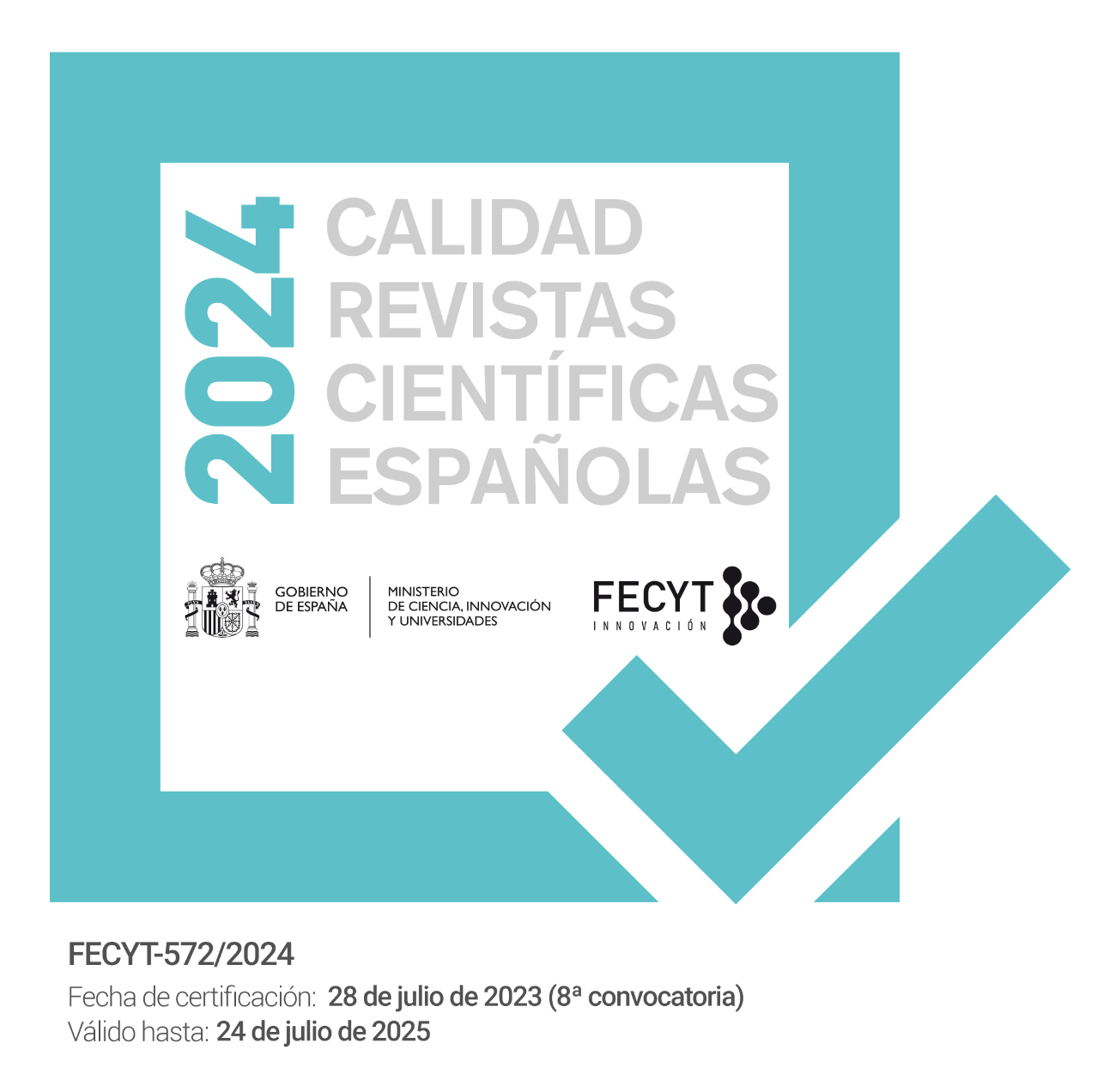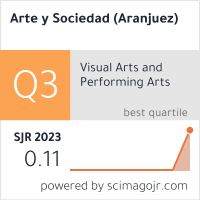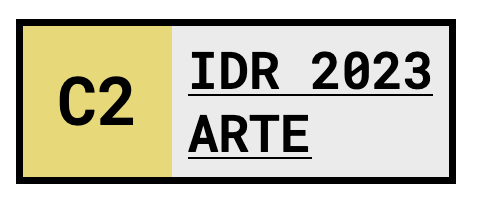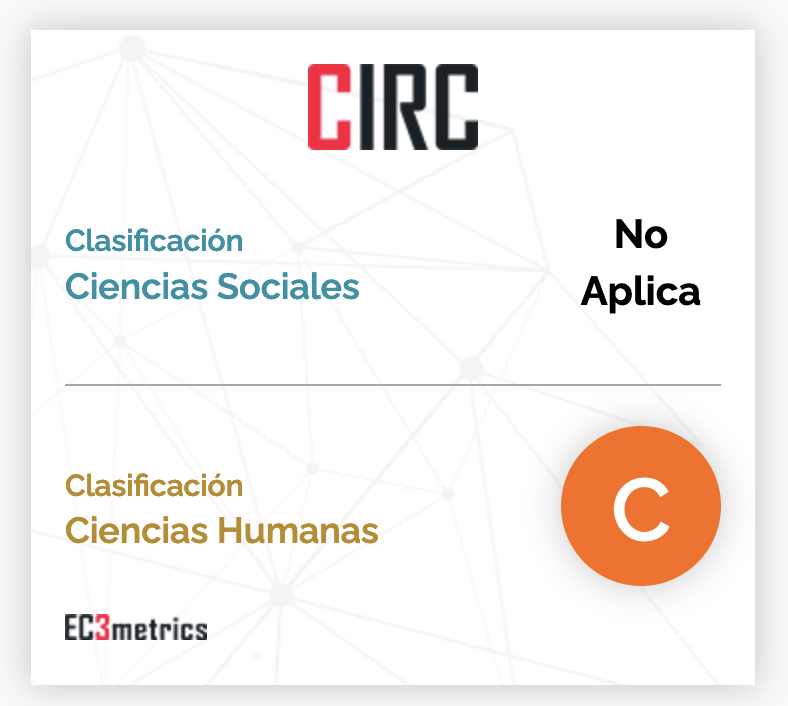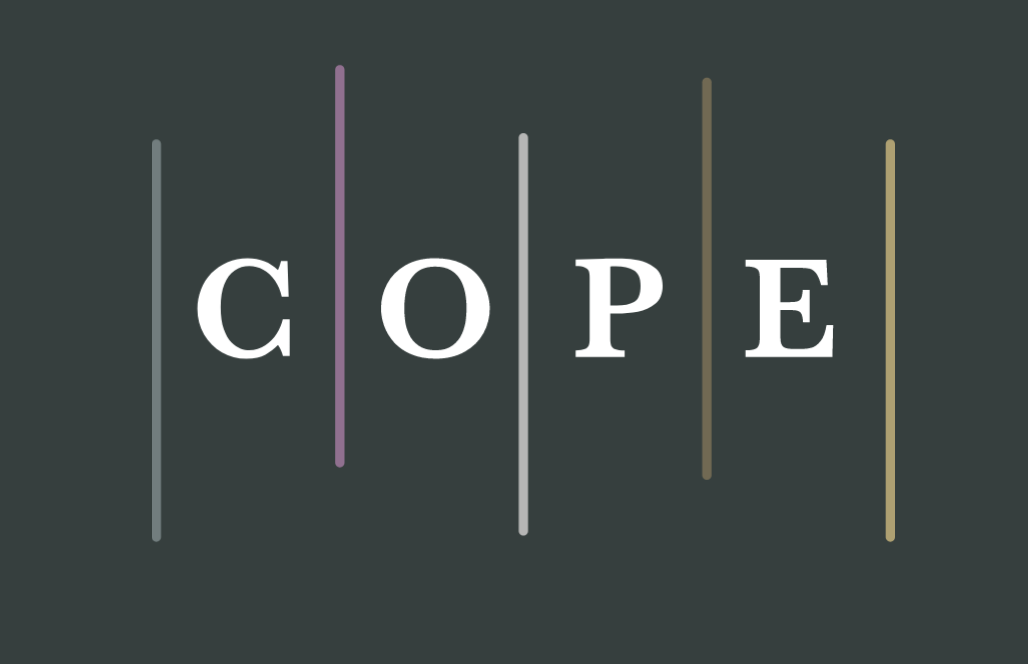ON. Off. On. Off. Light Intermittence as a creation practice in the 1960s
DOI:
https://doi.org/10.5281/zenodo.7644045Keywords:
Intermittence, Flicker Film, Epilepsy, Peter Kubelka, Tony ConradAbstract
A segmented conception of time in the modern era contributes to producing progressively a clipped and intermittent grammar within the field of artistic production. Due to certain movements, such as the Flicker Film in the 60s, this practice will be taken to the extreme leading to works exclusively composed by the flickering of light.
References
Barthes, R. (2009). Lo obvio y lo obtuso. Imágenes, gestos y voces. Paidós.
Benjamin, W. (2008). Obras. Libro I, vol. 2. Abada.
Bordwell, D. (1999). El cine de Eisenstein. Teoría y práctica. Paidós.
Camper, F. (1989, 17 de marzo). Music Notes: Peter Kubelka’s quest for essences, Chicago Reader, p. 7.
Caws, M. A. (1989). The art of interference. Stressed readings in verbal and visual texts. Princeton University Press.
Collins, D. (ed.). (1994). Seeing the unseen. Dr. Harold E. Edgerton and the wonders of Strobe Alley. George Eastman House.
Conrad, T. (1966, verano). Tony Conrad ‘On The Flicker’, Film Culture, núm. 41, pp. 1-3.
Cornwell, R. (1971, septiembre). Paul Sharits: Illusion and Object, Artforum, pp. 56-62.
Cornwell, R. (1974) “Michael Snow”, Projected images. Peter Campus, Rockne Krebs, Paul Sharits, Michael Snow, Ted Victoria, Robert Whitman [catálogo de exposición]. Walker Art Center.
Deleuze, G. (2004). La imagen tiempo. Estudios sobre cine 2. Paidós.
Geiger, J. (2002, 28 de febrero) Interview conducted 28 February, 2002 with Tony Conrad, by telephone from New York State, University at Buffalo. Recuperado de:
https://web.archive.org/web/20070524035955/http://tonyconrad.net/geiger.htm (Fecha consulta 18-10-2021).
Gidal, P. (Ed.). (1976). Structural Film Anthology. Londres, RU: British Film Institute.
Mekas, J. (1971, 11 de noviembre). Movie journal, The Village Voice, vol. XVI, núm. 45, p. 69.
Mekas, J. (2000). Interview with Peter Kubelka. En P. A. Sitney (Ed.), Film Culture Reader (pp. 285-299). Nueva York, EEUU: Cooper Square Press.
Michaud, P. A. (2006). Sketches. Histoire de l’art, cinema. París, FR: Kargo & Éclat.
Sitney, P. A. (1964, otoño). Kubelka Concrete (Our Trip to Vienna), Film Culture, núm. 34, pp. 48-51.
Sitney, P. A. (Ed.). (2000). Film Culture Reader. Nueva York, EEUU: Cooper Square Press.
Sitney, P. A. (2002). Visionary Film. The American Avant-Garde, 1943-2000. Nueva York, EEUU: Oxford University Press.
Suárez, J. A. (2008). Structural Film: Noise. En Beckman K. y Ma J. (Eds.), Still Moving. Between Cinema and Photography (pp. 62-89). Durham: Duke University Press.
Bruckner, R. T. (2008, otoño). Travels in Flicker-Time (Madre!), Spectator, vol. 28, núm. 2, pp. 61-72.
Bruckner, R. T. (2009, diciembre). El instante y la oscuridad: el momentum del cine. En Brea, J. L. (Ed.), Estudios Visuales, núm. 6 (pp. 112-129). Murcia: Cendeac.
van Veen, F. (1966). Handbook of Stroboscopy. Concord (Massachusets), EEUU: General Radio Company.
Wells, H. G. (2009). La máquina del tiempo. Madrid: Anaya.
Williams, A. (1976, enero-agosto). Notes on films, Media Study [material procedente de los archivos del Film Department del MoMA].
Wudunn, S. (1997, 18 de diciembre). TV Cartoon's Flashes Send 700 Japanese Into Seizures, The New York Times. Recuperado de: https://www.nytimes.com/1997/12/18/world/tv-cartoon-s-flashes-send-700-japanese-into-seizures.html (Fecha consulta 18-10-2021).

Published
How to Cite
Issue
Section
License

This work is licensed under a Creative Commons Attribution 4.0 International License.
You are free to:
Share — copy and redistribute the material in any medium or format.
Adapt — remix, transform, and build on the material for any purpose, including commercial.
Attribution — You must properly acknowledge the authorship, provide a link to the license, and indicate if any changes have been made.
You may do so in any reasonable manner, but not in any way that suggests that you endorse or receive any endorsement by the licensor for your use.
No additional restrictions — You may not apply legal terms or technological measures that legally restrict you from doing what the license allows.



